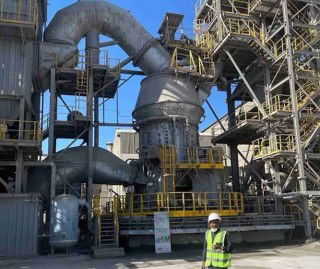A recent report by Morgan Stanley sees the global supply-demand balance turning positive, leading to improved pricing power which it expects will return globally next year. The research house also sees important changes in the make-up of global volume growth as China's cement demand expansion is seen slowing. However, clear threats still exist in the form of uncertainties in Europe and in the possibility that US economic recovery could be stumbling. ??
The Morgan Stanley report highlights that after four years of a negative balance, the relationship between supply and demand has started to show signs of a recovery so far in 2012 with the exception of China. For this year, it anticipates 1.3% global demand growth. Excluding China, where it forecasts zero growth, the advance would be 3.4%. Looking ahead, a 3.5% worldwide demand CAGR is forecast over the coming five years (4.7% excluding China). Crucially, these scenarios are based on the assumption that the euro will not fail.
Indeed, a significant slowdown in the pace of Chinese cement demand growth is expected with some commentators warning that the country's economy could suffer a hard landing. Per capita consumption is currently at 1400kg and question marks hang over its sustainability. Societe Generale analysis indicates that "such high cement consumption is unsustainable and all countries where cement consumption has exceeded 1000kg per capita for a number of years have gone through a construction crisis sooner or later." With cement consumption expected to drop severely at some point in the near future, it predicts that it will be greater than the fall-off in construction activity, so a 20% decline in construction might lead to a 40% decrease in China's cement consumption. Morgan Stanley believes that China has now "reached its structural peak in cement consumption" and forecasts that it is set to be among the regions with the lowest rates of growth in the next five years. Underlining these concerns, yesterday Anhui Conch issued a profit warning saying its net profit would fall more than 50% in the first half from a year ago due to weak demand and falling product prices.
Western Europe also remains full of uncertainties. Greece's recent elections failed to deliver a government and the country will go to the polls again on 17 June. The result could determine whether it remains in the eurozone. Spain is also nearing boiling point and on the brink of a bailout and Italy could possibly follow suit. Cement consumption in these three countries is at worryingly low levels and currently there is no visibility on a reversal of the downward trend. Demand in other countries in Western Europe is also falling but by smaller amounts and overall Morgan Stanley are expecting two more years of negative results for the region. While recovery is expected to begin in 2014, the pace is likely to be slow.
Major cement companies have been responding to the crisis with plans of price increases and new cost-cutting initiatives. Earlier this week, HeidelbergCement 's CEO Bernd Scheifele said in an interview with the Wall Street Journal Deutschland that the company is building a liquidity buffer in case the euro-zone crisis worsens. "At the end of our first quarter, our total liquidity was more than EUR3.7bn," Mr Scheifele said. The sovereign-debt crisis in Greece has had little impact on Heidelberg's operations as the country has little reach in southern Europe. The euro crisis is, however, hindering the company from expanding into new countries, as Mr Scheifele stated: "This isn't the time to be bold."
Over in the US, where economic growth, and indeed a pick-up in construction activity, has been one of the brighter spots in the global arena, a bleaker view of the economy has taken hold in recent weeks. The economy grew at a tepid annual rate of 1.9% in the first three months of 2012 down from the 2.2% first thought. The slower growth rate followed a modest downward revision in consumer spending. Unemployment, meanwhile, rose to 8.2% in May, the first increase in nine months leading some commentators to ask whether post-crash stimulus package has run out of steam and austerity cuts are taking over. However, many economists expect US economic growth to continue at about 2.5% for the rest of the year, a better performance than the 1.7% growth recorded in 2011.
In a recent research note, Bernstein noted that two key themes emerged from this year's first-quarter results for the companies under its coverage. While the quarter was characterised by a mixed weather effect (the European big freeze versus the mildest North American 1Q on record) as well as an unusual 1Q11 comparison base including the Arab Spring, revenues rose strongly, driven by solid volumes and pricing that is becoming more entrenched. Margins, on the other hand were more varied due to a number of seasonal effects in what is a small quarter, and therefore unrepresentative of full year earnings. Going forward, it believes: "The positive dynamic of strong growth in revenue, robust pricing and reduced energy cost pressure for the remainder of the year will support product margins more robustly than in the last two years.

Hima Cement emerges as leading contender to acquire Khayah Cement
Hima Cement , the East African producer owned by Uganda’s Sarrai Group, has emerged as the lead...